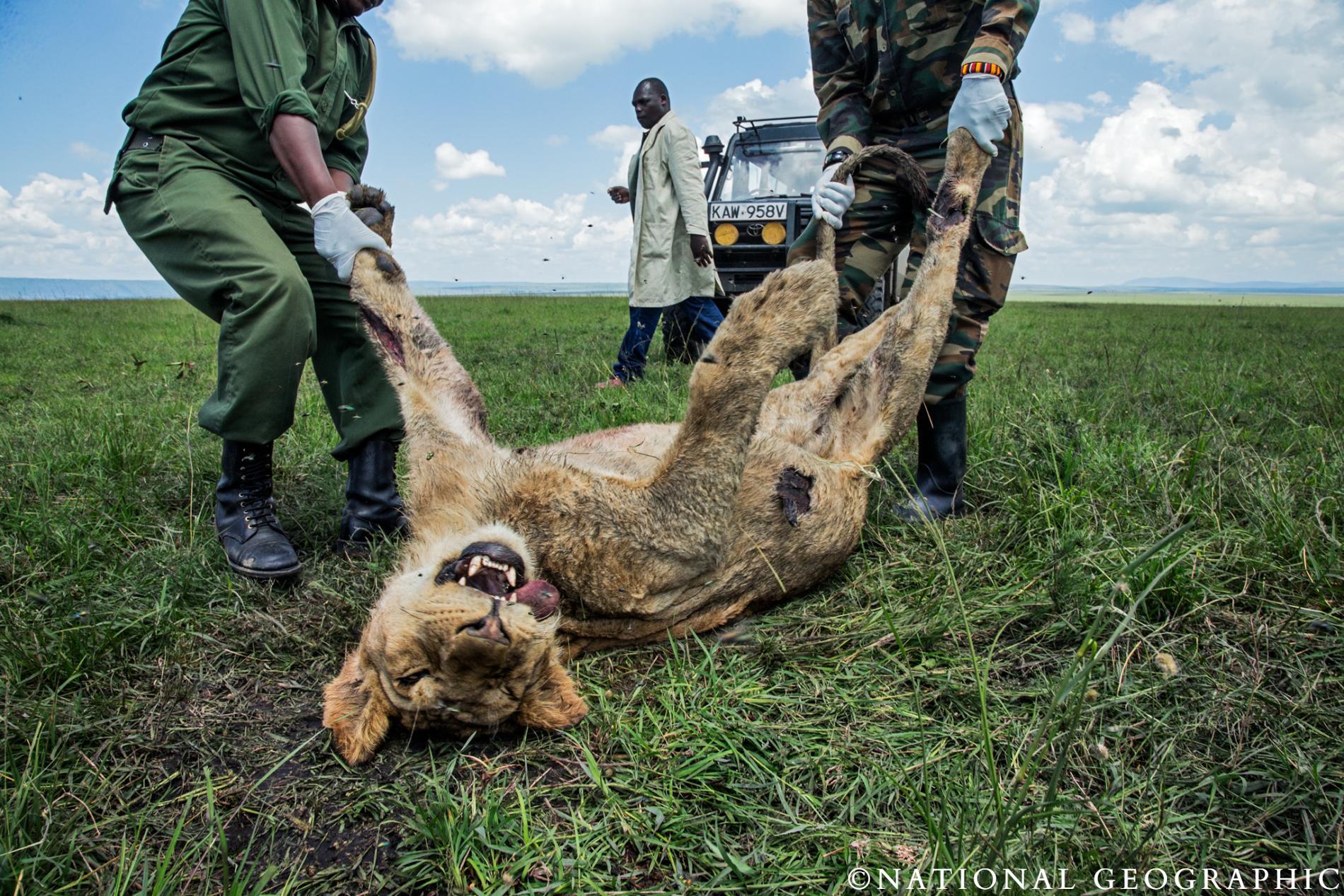Big Local Progress on Wildlife Poisoning


Recently, a powerful National Geographic article depicting wildlife poisoning in Africa featured our work and that of many conservation partners, as well as the Kenya Wildlife Service.
And while poisoning is a critically important conservation issue, we would like to share that we actually experience very little poisoning in the Amboseli-Tsavo group ranches where we work. We’ve seen just one incident in 8 years within the Amboseli group ranches, and poisonings are reported to occur one or two times each year outside our areas of operation. These incidents are mostly at the hands of people who do not understand the consequences of poisoning, nor do they see the benefits of conservation. In contrast, the rates in and around our operating area are relatively low, because the communities are engaged and benefitting from conservation and having lions on their lands.
That’s not to say there is no conflict here; on the communally-owned group ranches, we have extremely high densities of people and livestock coexisting alongside a lion population that has more than tripled in the past five to ten years. Furthermore, lions here rely heavily on the communally-owned Maasai rangelands; approximately 70% of the 200+ lions live outside of the protected areas year-round, and the remaining 30% reside in the protected areas but move out to the group ranches during the rainy seasons. With such high numbers of lions being so dependent on community lands, conflict here is inevitable.
Nonetheless, the use of poison has decreased significantly in our areas since 2005-2006. We have experienced a few cases now and again outside our borders, but the frequency of incidents is much lower than before. The particular poisoning event described in the article was triggered by an influx of people from other areas during a time of extreme drought and hardship; in ten years, we have not had such an incident. Most people in this area are now aware of the harmful side effects of poison on the health of humans and domesticates, so it is rarely used. And because our local communities are not just accepting of conservation, but actually invested in both the process and the outcome, the herdsmen here are extraordinarily tolerant.
This is true conservation impact: local people with little annual income except their livestock herds, tolerating a dense population of carnivores. Because land and resources are finite, conflict is increasing, but so is awareness of conservation and its benefits. The fate of the wildlife here is completely in the hands of the community, and this exceptional and tolerant community is able to coexist with booming populations of carnivores and other imperiled species.



Fantastic news and observations! These lion guardians are on top of their lions, so they know what’s going on. They will be gaining even more respect from everyone for a job WELL DONE as the news of their effort and work spreads. I’m very impressed by all their intervention and collaboration, too.